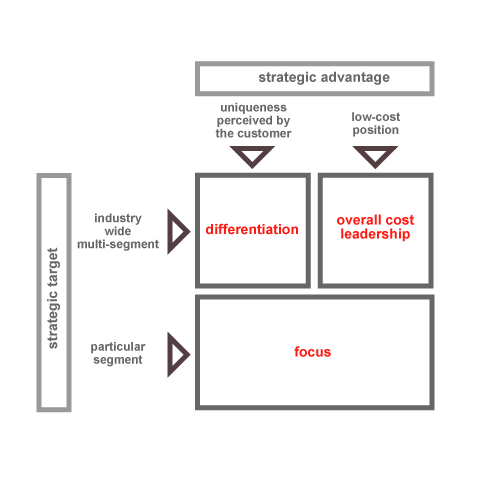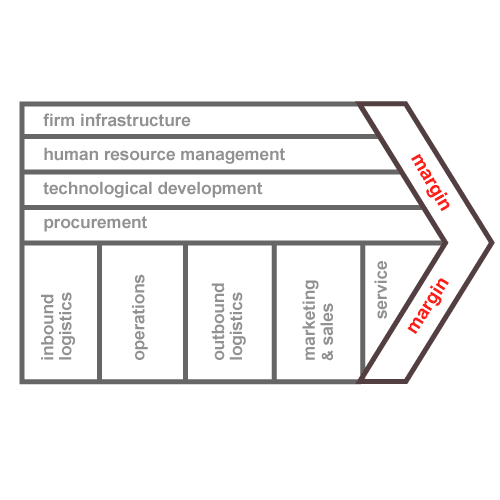| << Chapter < Page | Chapter >> Page > |
Michael Porter developed two other tools that are widely used by organizations in their approach to markets: Three Generic Strategies and the Value Chain .
Porter postulated that a firm should adopt only one of three generic strategies. They are illustrated in :

A firm can choose to be the low cost producer for a wide segment of the market; it can offer a differentiated product for a wide segment that customers are willing to pay more for because of its perceived greater value; or it can focus on a market niche as a low cost producer or with a differentiation strategy. For example, the original Volkswagen automobile focused in a broad low-cost market. As a matter of fact, the word in German means “Peoples Car”, indicating it was meant to be affordable by everyone. A good example of a differentiated automobile is the BMW. People pay more for a BMW because of the “conspicuous consumption” or “luxury badging aspects” they have managed to create in peoples’ minds, not necessarily because the BMW is actually worth 30 per cent more than a comparable automobile from Cadillac or Nissan. An example of a car positioned towards a low cost niche is the Mazda Miata, a two-seat sports car that costs much less than comparable cars. Finally, you can consider the Hummer as a car that appeals to a differentiated market niche.
Porter’s other widely-used tool is the Value Chain, which is used to model the firm as a chain of value-creating activities or processes. Porter identified a set of interrelated generic processes common to a wide range of firms. He divided them into primary activities and support activities, as illustrated in [link] .

Source:
(External Link)
The primary activities in the value chain are: inbound logistics, operations, outbound logistics, marketing and sales, and service. The support activities are procurement, technology development and research and development, human resource management, and firm infrastructure (top management). The primary value chain activities are interrelated, to the extent that they can be formed with high quality and low cost, the firm will be able to have value-added that will be returned to the firm as profit. As an example of the way that primary value activities are interrelated, suppose that the inbound logistics process does not do well in identifying raw materials of poor quality. This will cause problems with the next process, operations, and it may cause problems as far down the value chain as service after the sale. The value chain is, thus, a useful tool for analysing a company’s business processes and searching for ways to lower costs, improve efficiency or search for process innovations.
There are many other strategic models used by companies to help them formulate their overall business and marketing strategies. Three of best known models are the Boston Consulting Group (BCG) Matrix, the McKinsey Matrix, and Larry Downe three forces. Each of these models is described below.

Notification Switch
Would you like to follow the 'Business fundamentals' conversation and receive update notifications?